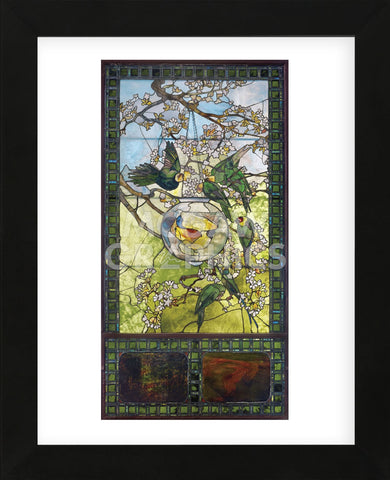Product Detail
- Overall: 16" H x 13" W x 0.75" D
- Overall Product Weight: 2.5lb.
- Material: Glass
- High-quality print on heavy paper
- Printed with vibrant, color-fast inks
- Framed in a contemporary style molding; available in black, gold, and white
- Sawtooth hanger
- Unmatted
Photograph © 2014 Museum of Fine Arts, Boston
Product Detail
- Overall: 16" H x 13" W x 0.75" D
- Overall Product Weight: 2.5lb.
- Material: Glass
- High quality print on heavy paper
- Printed with vibrant, color-fast inks
- Framed in a contemporary style molding; available in black, white, and gold
- Sawtooth hanger
- Unmatted
About the Artist
Louis Comfort Tiffany, the son of Charles L. Tiffany, founder of Tiffany and Company, was originally trained as a painter, studying first with George Inness and later in Paris. He formed the Tiffany Glass Company in 1885, and by experimenting with new techniques, created glass which contained bubbles, natural flaws and a range of thickness due to the way the glass was blown. He embraced these imperfections because they helped make each piece unique.
Tiffany’s goal was to create objects of great beauty and expert craftsmanship which could be bought less expensively by a larger portion of the population. Influenced by the artists of the English Arts and Crafts movement, Tiffany envisioned a workshop - with himself as the master - surrounded by many assistants. Unlike his idol, William Morris, Tiffany had no problem catering to the needs of the wealthy. This was the period of the American industrialist who suddenly, with much cash in hand, wished to decorate his home with sumptuous wall coverings, fabrics and furniture. Tiffany marketed himself to this customer as well as the average glass consumer.
The opalescent glass, known as Tiffany favrile glass, is eagerly sought after by international collectors. His designs were used to create windows, lamps and other decorative art objects, which effectively changed the way glass was produced in America.





